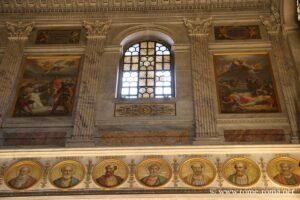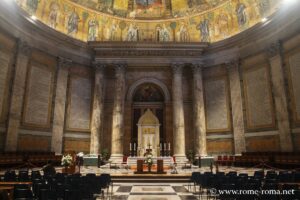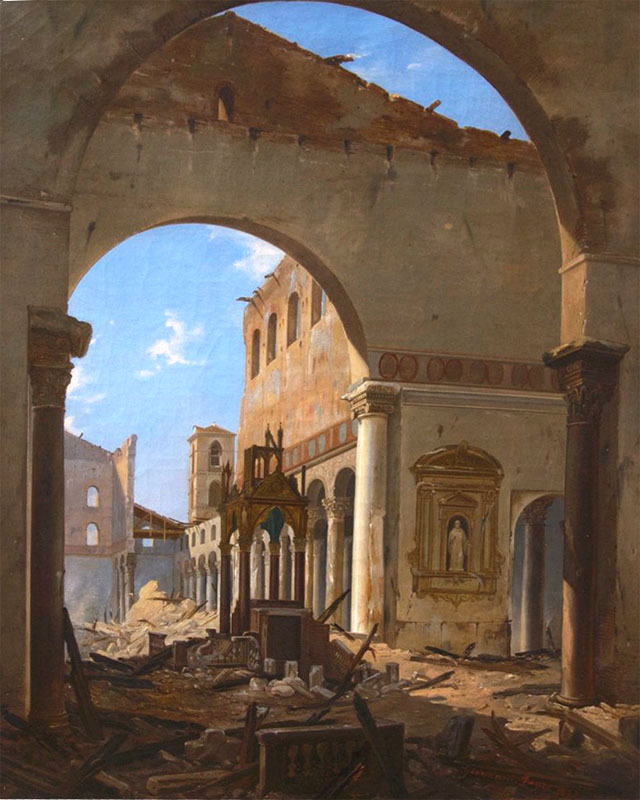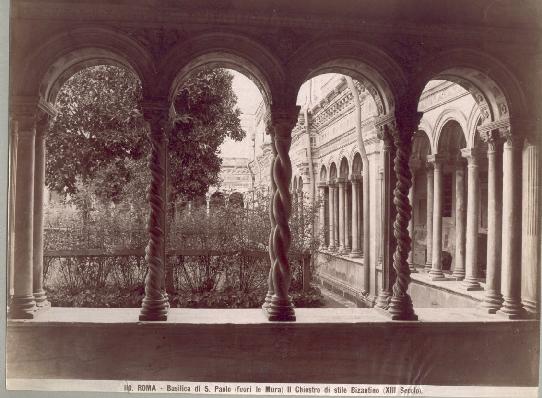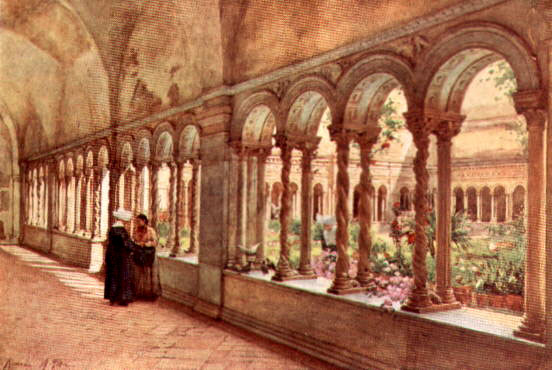Located on the Via Ostiense, about 2 km from the Aurelian Walls, Saint Paul Outside the Walls is one of the four patriarchal basilicas. It was the largest Christian building in the world, from the 5th century until the construction of St. Peter’s Basilica in the 16th century.
Destroyed by fire in 1823, this great basilica dates back to the 4th–5th century. It was faithfully rebuilt according to the original plan.
Its superb 13th-century cloister was spared by the flames.
The interior, supported by 80 columns, is grand and filled with light. A large frieze runs along the walls with 265 medallions representing all the popes since Saint Peter. There was also a gallery of portraits, which was destroyed in the 1823 fire.
What to see at Saint Paul Outside the Walls in Rome?
- The portraits of the popes: A unique frieze runs along the upper walls of the nave, depicting the portraits of all the popes from Saint Peter to the present day. Fascinatingly, one notices that little space remains for future popes!
- The cloister: Considered one of the most beautiful cloisters in Rome, it dates from the 13th century and is adorned with twisted columns and delicate mosaics. It is a peaceful spot to pause for a while.
- The baldachin and papal altar: Beneath the magnificent Gothic baldachin by Arnolfo di Cambio (13th century) stands the altar, built above the presumed tomb of Saint Paul.
- The apse mosaic: The immense 13th-century mosaic in the apse is a masterpiece. It depicts Christ in Majesty surrounded by the apostles, with brilliant details that capture the light.
- The façade and quadriportico: Before entering, admire the façade with its golden mosaic and the large quadriportico at the entrance, which offers a fine perspective with the statue of Saint Paul at its center.
- The Easter candlestick: Near the apse, this sculpted 12th-century masterpiece bears numerous details and symbols.
History of the Basilica of Saint Paul
It is on the site where, according to tradition, the Apostle Paul was buried, along the Via Ostiense, that the first Christians erected a chapel. This was later transformed into a basilica by Constantine, and is said to have been consecrated in 324 by Pope Silvester I.
The construction of a five-aisled basilica began between 385 and 395, during the decline of the Roman Empire, first under Emperor Theodosius I (379–395), who banned the old pagan temples.
It became one of the most important stages of pilgrimage in Rome.
This great basilica was inspired by the ancient Basilica of the Forum of Trajan, with three aisles separated by ancient columns, its interior illuminated by forty windows. In the 9th century, a village developed around it, known in the sources as Giovannopoli. After Saracen incursions, John VIII fortified it.
Over the centuries, the church was enriched with magnificent works of art. In 1070, beautiful bronze doors made by Byzantine craftsmen in Constantinople were donated.
In the 13th century, the marble-workers’ family Vassalletto worked here. Arnolfo di Cambio created the tabernacle, and Pietro Cavallini painted the frescoes decorating the nave, as well as the mosaics of the façade, unfortunately lost.
Other works took place in the 15th century with Antoniozzo Romano and Benozzo Gozzoli, and in the 17th century with Carlo Maderno and Onorio Longhi.
From August 15 to 16, 1823, the basilica was almost entirely destroyed by a fire, which spared only the transept and part of the façade.
A committee set up by Pope Leo XII entrusted the complete reconstruction of the sanctuary to Pasquale Belli. With other architects, they demolished the still-standing parts and rebuilt the building between 1825 and 1854, respecting the size and plan of the ancient basilica.
Description and visit of the basilica
Façade and quadriportico
On the façade, the mosaics of the upper part from the 19th century are by Luigi Poletti, who also designed the bell tower and the portico on the north side. For the latter, twelve columns from the nave of the old church were reused.
The rectangular courtyard facing the basilica is a work of Virgilio Vespignani, dating from the late 19th century. At its center stands the statue of Saint Paul by Giuseppe Obici.
The basilica has a Latin-cross plan, divided into five naves by four rows of eighty monolithic granite columns. The six in the entrance hall were donated by the Viceroy of Egypt to Gregory XVI.
The walls and floor are clad in polychrome marbles with geometric patterns.
The alabaster windows diffuse a soft light, while a long frieze of 256 medallions in golden mosaic depicts the portraits of the popes, from Saint Peter to the present day, running along the nave and aisles. This work, begun in 1846 under Pius IX, is inspired by a tradition present in the ancient basilica.
Above are 36 frescoes from the 19th century illustrating episodes from the life of Saint Paul and the Gospel.
Excavations carried out since the 19th century have revealed more than 1,700 funerary plaques, testifying to the thousands of burials that once lay beneath the basilica’s floor. As in other martyrial basilicas, from the 4th century the building served as a vast covered cemetery, with dense stratification and sometimes reuse of tombs.
In the nave, two statues represent Saint Peter (by Salvatore Ravelli) and Saint Paul (by Ignazio Jacometti).
Triumphal Arch and Apse
The Triumphal Arch is decorated with mosaics dating from the 5th century, which have been completely restored. They depict scenes from the Apocalypse. The central altar, under which lies the tomb of the Apostle, is surmounted by the famous Gothic ciborium by Arnolfo di Cambio (1285), composed of four red porphyry columns supporting a roof decorated with corner statues and colorful mosaics.
To the right of the altar, the large marble Easter candlestick is the work of Nicola D’Angelo and Pietro Vassalletto (1170).
The apse is dominated by an impressive mosaic commissioned by Pope Innocent III (1198–1216) and completed under Honorius III. The latter is depicted in small scale at the feet of Christ blessing, between Saints Peter, Andrew, Paul, and Luke. In the lower part are the apostles, crosses, and the instruments of the Passion.
Beyond the apse are substantially restored fragments of Cavallini’s mosaics that decorated the original façade. The Chapel of the Blessed Sacrament, designed by Carlo Maderno, houses the tomb of Pietro Cavallini and two valuable works that survived the 1823 fire: a 14th-century crucifix attributed to Cavallini, and a venerated wooden statue of Saint Paul from the late 14th century.
The transept and chapels
The transept follows the decoration of the nave, with polychrome marbles and frescoes of the life of Saint Paul, and contains two twin altars in malachite offered by Tsar Nicholas I. The side chapels preserve various works, such as the Martyrdom of Saint Stephen by Podesti, a statue of Saint Bridget by Maderno, a 14th-century crucifix attributed to the Sienese school, and a marble triptych by Andrea Bregno. The chapel of Saint Benedict, designed in a style reminiscent of an ancient temple, contains a statue by Tenerani. Nearby is the Oratory of San Giuliano, the former martyrium of the monastery, which preserves fragments of frescoes from the 12th–13th centuries depicting several venerated saints, including Saint Caesarius of Terracina and Saint Stephen.
The 13th-century cloister
The transept gives access to the 13th-century cloister, the work of Vassalletto, which was spared by the flames. Created by Cosmatesque masters, it is one of the most beautiful in Rome, with its rich and varied double colonnades, sometimes twisted in shape, supporting arches on which stretches an entablature decorated with polychrome inlays and mosaics. The cloister houses many architectural fragments from the ancient basilica and archaeological finds from the nearby Ostiense cemetery, including the large sarcophagus of Pietro Leone (12th century), decorated with scenes of the contest and torture of Marsyas.
In the adjoining picture gallery are papal portraits by Lanfranco (1624).
Photo Gallery
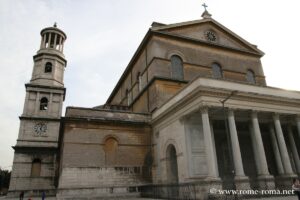
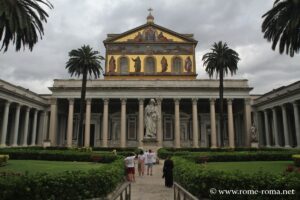
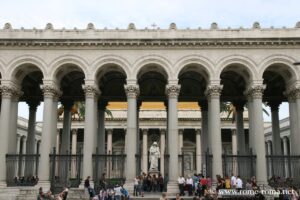
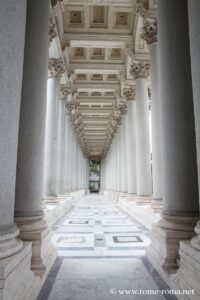
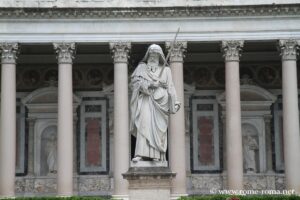

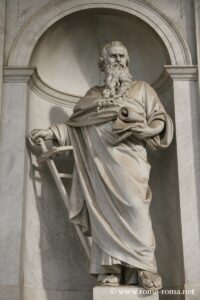
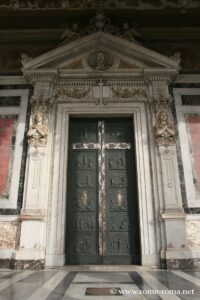
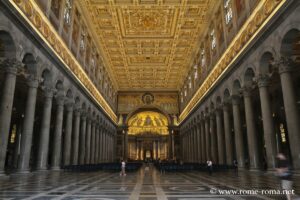
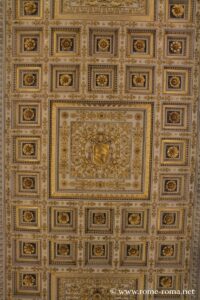
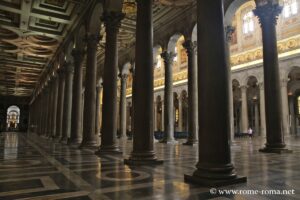
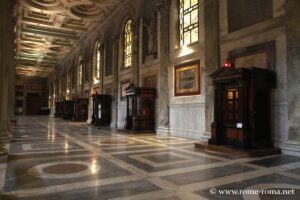
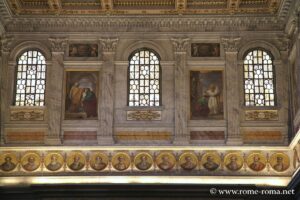
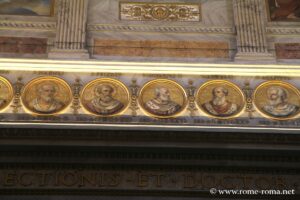
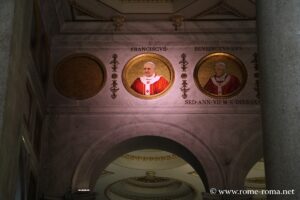
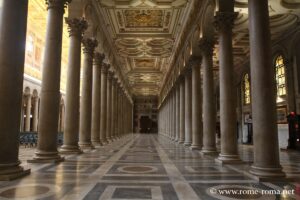

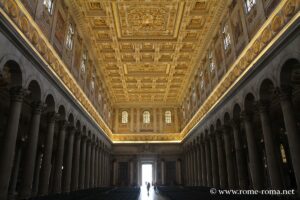
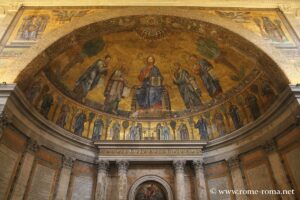
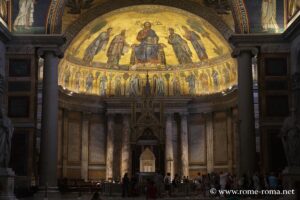
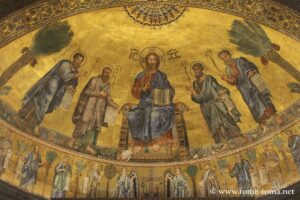
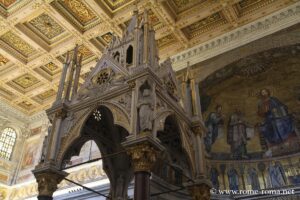

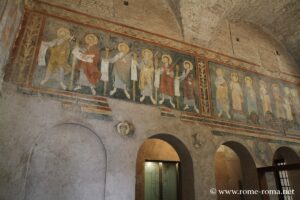
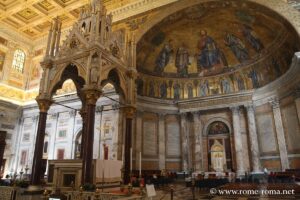
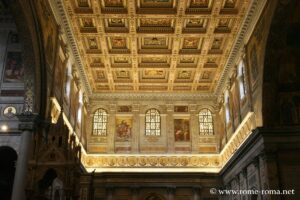
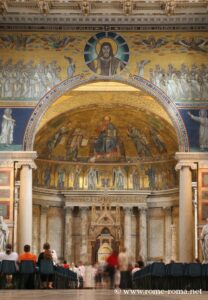
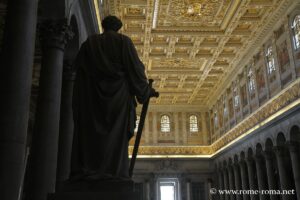
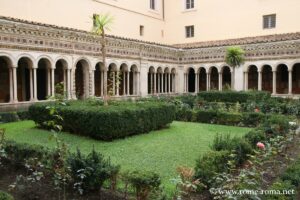
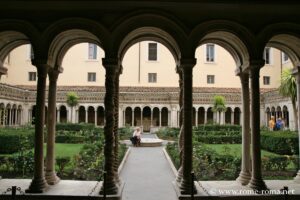
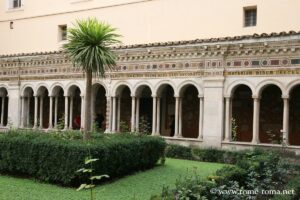
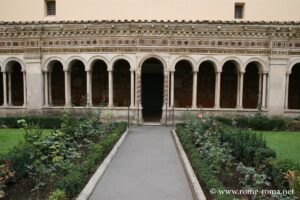
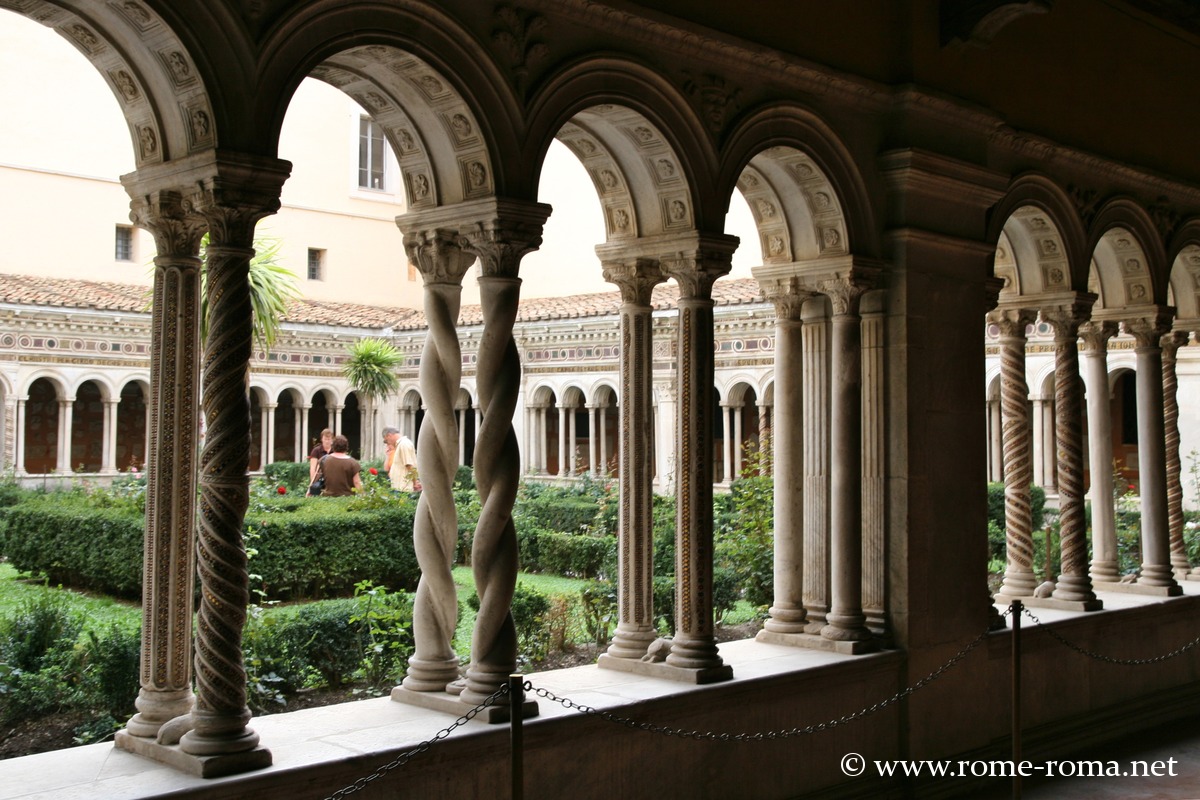
Ancient views in art
Photo late 19th century and view by Giuseppe Vasi from the 18th century.
Map and address
Address : Piazzale San Paolo, 1, 00146 Roma RM, ItalieIf you see this after your page is loaded completely, leafletJS files are missing.
Information and Opening Hours
| Basilica of Saint Paul Outside the Walls Piazzale San Paolo, 1 – 00146 Rome |
Opening Hours (subject to change)
|
Links |
Major Papal Basilicas
- St. Peter’s Basilica in the Vatican
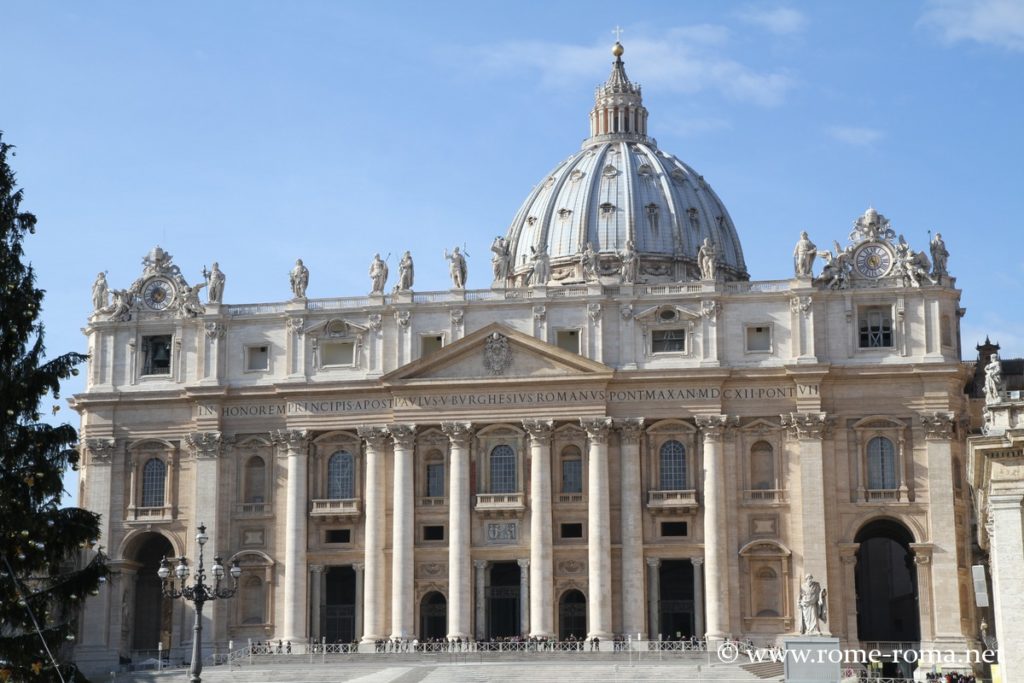 Discover the Saint-Pierre Basilica of Rome: visit, description and history. Built on the tomb of the apostle Peter which would date from the year 60, it became under Constantine, the incarnation ...
Discover the Saint-Pierre Basilica of Rome: visit, description and history. Built on the tomb of the apostle Peter which would date from the year 60, it became under Constantine, the incarnation ... - Basilica of Saint Mary Major in Rome
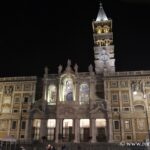 Discovery of the oldest church dedicated to the worship of the Virgin Mary in Rome. Information and times, visit and description of the Basilica of Santa Maria Maggiore, founded in ...
Discovery of the oldest church dedicated to the worship of the Virgin Mary in Rome. Information and times, visit and description of the Basilica of Santa Maria Maggiore, founded in ... - Archbasilica of Saint John Lateran
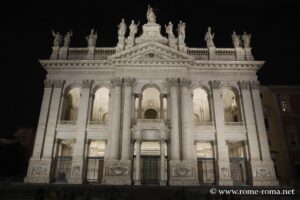 The Papal Basilica of St. John Lateran in Rome is the cathedral of the Pope as Bishop of Rome. Erected around the year 320, it is considered as the mother ...
The Papal Basilica of St. John Lateran in Rome is the cathedral of the Pope as Bishop of Rome. Erected around the year 320, it is considered as the mother ... - Basilica of Saint Paul Outside the Walls
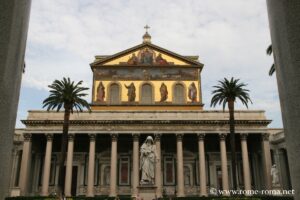 St. Paul’s Basilica outside the walls in Rome is one of the largest Christian basilicas in the world. Visit, description, schedule of the monument and its remarkable cloister.
St. Paul’s Basilica outside the walls in Rome is one of the largest Christian basilicas in the world. Visit, description, schedule of the monument and its remarkable cloister.

